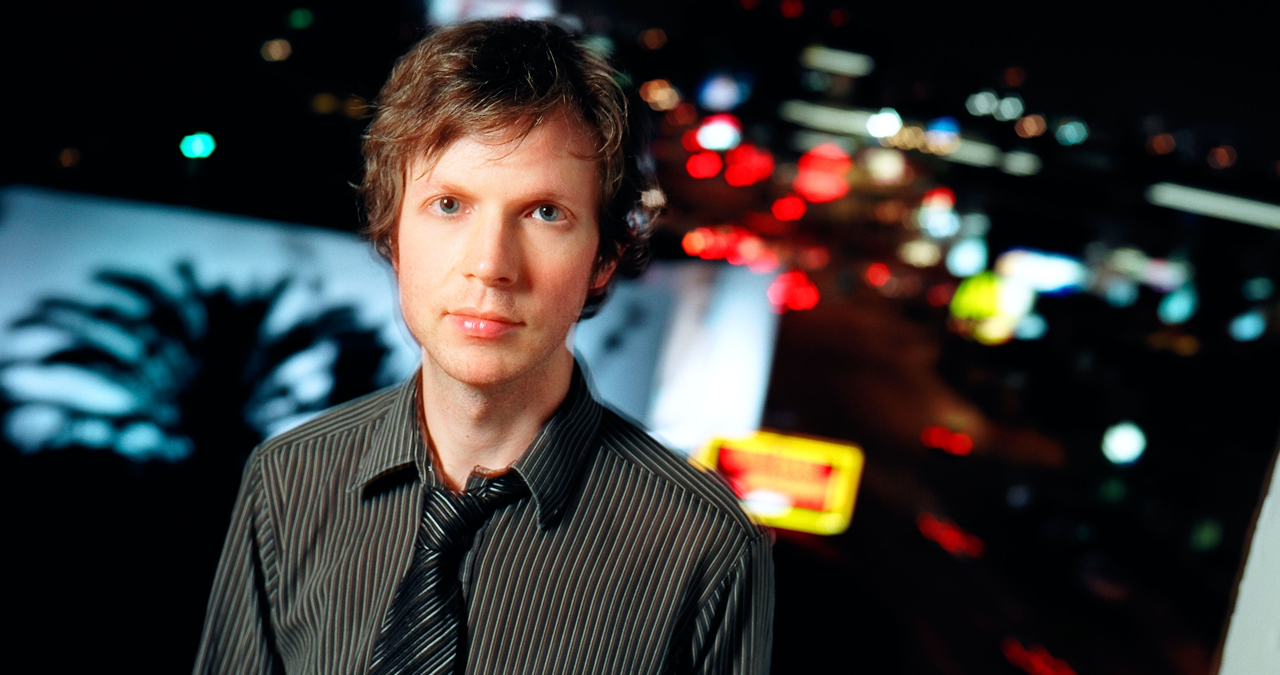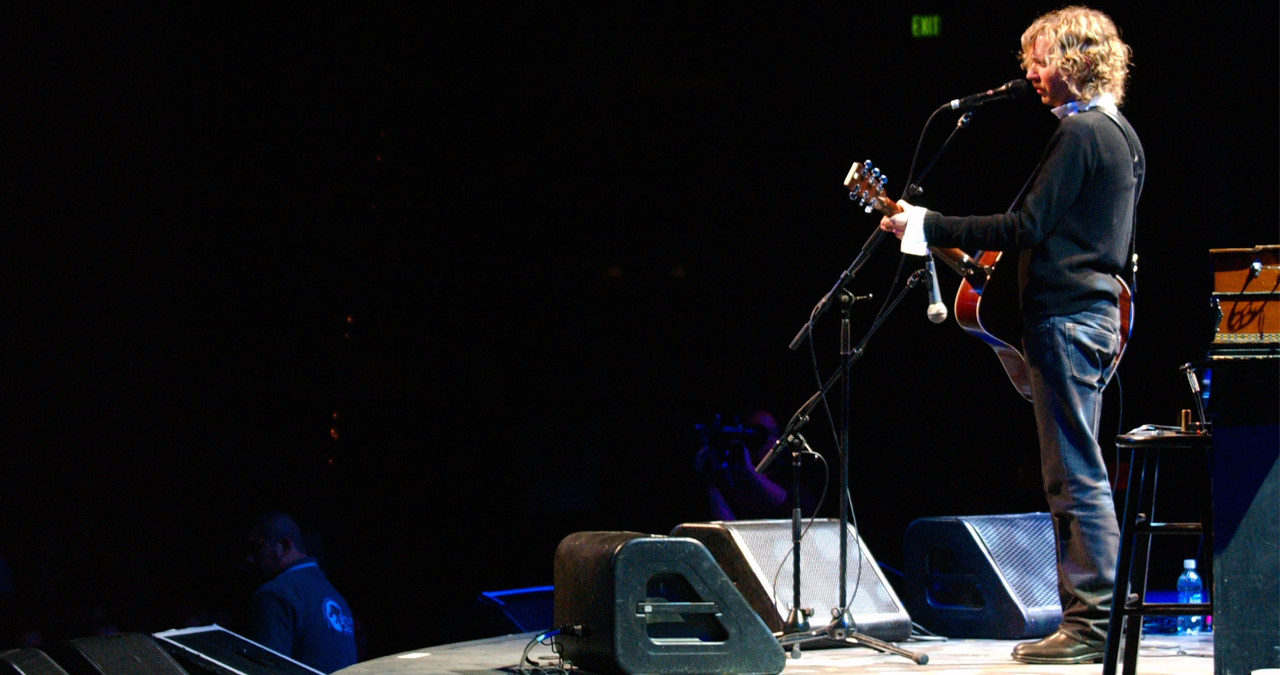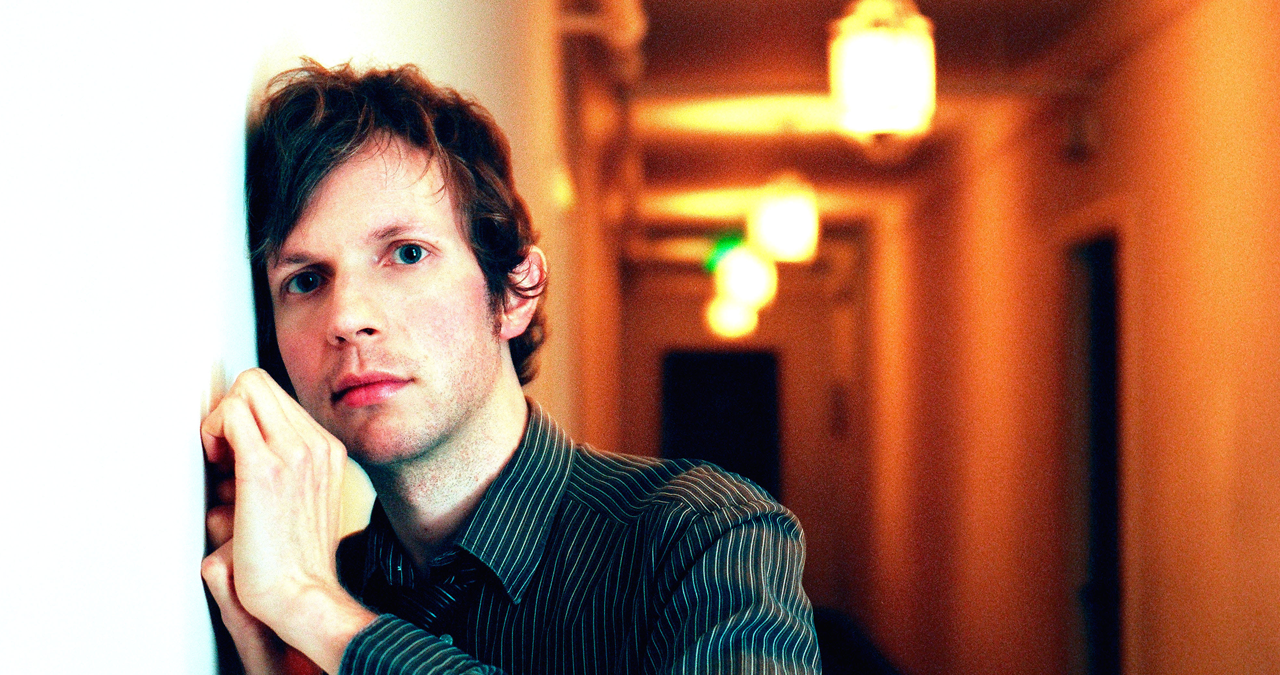How Beck and Nigel Godrich’s “simple and clean” philosophy produced one of the best-sounding albums of the 21st century
Beck’s surprising 2002 pivot was defined by its immaculately-recorded acoustics, and is often cited as a choice reference test by audio enthusiasts

RECORDING WEEK 2025: Imagine you’re radically inventive, off-the-wall troubadour Beck at the turn of a new millennium.
You’ve won countless plaudits and a devoted audience by being one of the most creatively audacious genre-fusers of the era. With a penchant for melding hip-hop with lo-fi rock elements, your wry artistic persona is driven by a playful wit. From Loser to Devil’s Haircut, Odelay to Midnite Vultures, it’s a post-modern posture thats strongly jibes with Gen X.
After seven records (four of which on a major label) of flavoursome stylistic smushing, everyone is keen to see what fresh aural adventures you’ll embark upon as a new century dawned.
But, instead of a record of upbeat, primary colours, your first album of the 2000s rebukes everything that the world previously thought they knew about you.
Gone was the slacker-coded irony. Gone were the weird, filtered sonics and excavated-from-a-record-shop samples.
In came wistful acoustic guitar, emotive strings, lyrics from the heart and an overarching sense of resignation and self-reflection.
This was a sea change in more ways than one.
Yes, Sea Change, Beck’s cherished eighth album, could easily have been the debut release of an entirely different artist. Some still hail it as Beck’s strongest song collection to date (it certainly triggered a side-strand of his career, which continued with the bucolic Morning Phase over a decade later).
Want all the hottest music and gear news, reviews, deals, features and more, direct to your inbox? Sign up here.
It’s also a record that’s frequently held up for its exquisite recording quality and sonic fidelity, with a sparkling production ably helmed by producer Nigel Godrich, most famous for his work with Radiohead.

Beck’s pull toward penning the album’s tranche of contemplative songs was triggered by the dissolution of his relationship with longtime girlfriend Leigh Limon in 2000.
By all accounts, the final nail in the coffin of their slowly fading partnership was the discovery that she had been cheating on him.
After a bitter split, Beck’s feelings of rejection, resentment and heartbreak were met with no small amount of soul searching, and a pinch of self-loathing. The wind had very much been knocked out Beck Hansen’s proverbial sails.
Clearly, mustering the energy to take on ‘the enchanting wizard of rhythm’ mantle once again was going to be a tall order. But, in time-worn, singer/songwriter tradition, the then-30 year-old musician was compelled to document how he felt.
Before we take a closer look at Sea Change’s recording story, we must first briefly look at this array of songs themselves, and the themes that would come to permeate the record.
From its serene, stately opener The Golden Age to wonky, slide guitar-laden epilogue, Side of the Road, Beck traversed a ragged psychological terrain questing for resolution. A journey of emotional penance.
There’s the hard mirror stare of the ‘living lies’ in Guess I’m Doing Fine, and there’s the sheer exhaustion of the dramatic Lonesome Tears - a crucial song which lurched dynamically from its beaten-down verse into quite the most passionately-charged chorus of the record. It led to a climax that ascended ever upward via a soul-touching swell of of strings.
Then of course, there’s key track (and the most well-known cut on Sea Change) Lost Cause.
Now a Beck staple, this gem found Hansen looking back to the dying days of his ailing relationship, bottling the feelings of surrender he felt as it neared its terminal phase.
Lyrically, Beck framed himself in the context of a solider, fighting a battle he knew deep down that he was doomed to not survive. As the highlighted lyrics below allude to.
Your sorry eyes, they cut through bone
Make it hard to leave you alone
Leave you here wearing your wounds
Waving your guns at somebody new
I'm tired of fightin'
I'm tired of fightin'
Fighting for a lost cause
Weapons, and destruction, often recur throughout Sea Change, another reference comes on the more existential Round the Bend, which depicted a pulled-back view of life rocketing by at uncontrollable speed; ‘faster than a bullet from an empty gun'. Meanwhile, album highlight Paper Tiger situated the fragile titular construct being torn apart by ‘idle hands’.
It’s not all violence and acrimony, though. The sumptuous Sunday Sun painted the protagonist at the ‘acceptance’ stage of his grief.
There's no other ending
Sunday sun
Yesterdays are ending
It’s clear, then, even from a cursory analysis of this set of songs, that this was the work of a wholly different facet of Beck’s persona. The mischievous master of ceremonies who once impishly proclaimed ‘I’ve got two turntables and a microphone’ had left the stage.
For Beck though, this candid honesty wasn't in any way a reproachment of his prior incarnations. “I’ve always challenged the idea that serious material is more indicative of who a person is,” Beck told Time following the record’s release. “I don’t think the laughing side of a human being is any less them than the side where they’re depressed.”

Beck realised that in his creative outpouring, he had the germ of an album that could resonate beyond the specifics of his own personal life, and communicate on a universal level.
Yet his material for this more stripped-back album would stand quite markedly aside from anything else in his kaleidoscopic canon.
“I just wanted the record to be simple and clean,” Beck told Time. “I wanted economy in the lyrics, and I wanted the songwriting to be very, very straightforward.”
Although the majority of Sea Change’s songs were written in quite brisk fashion, Beck’s desire to build the new album would take a frustrating two years to realise.
Eventually, with Mutations' (Beck’s country-infused 1998 record) producer Nigel Godrich again signed up to helm the album, the much-delayed recording sessions began at Ocean Way Studios in Hollywood, California on March 6th 2002.
“I think we originally wanted to do this record a year and a half ago, but it took a while for people to line-up,” Beck told Record Collector in 2002.
Godrich was struck by how Hansen had matured as a songwriter over the intervening years, and was impressed by the timbre of his voice.
“Before we recorded [Sea Change] we listened to Mutations, and his voice sounded like Mickey Mouse” Nigel recalled in an interview with Time, “His range has dropped. Now when he opens his mouth, a canyonesque vibration comes out. It’s quite remarkable. He has amazing tone.”
Sea Change’s central theme of heartbreak was an easy one for Godrich to zone in to. After all, he himself had just been through his own breakup.
“The producer, Nigel Godrich, had just broken up with his girlfriend [as well],” Beck told The Guardian. “So he was really devastated and heartbroken, too, and we were making the record together in that sense.”
While the album would retain the 'simple and pure' philosophy in terms of song construction, Godrich and Beck chose to augment the arrangement with both live band and luscious strings.

The live band largely consisted of the same players who’d worked on the more multi-hued precursor, Mutations. On bass was Beck’s longtime bassist Justin Meldal-Johnsen. Synth, keys (and clavinet) was handled by Roger Joseph Manning Jr. while providing some of the icy lead guitar lines was another Beck mainstay; bluesy licks-man Smokey Hormel.
On drums for the first half ot the three-week recording sessions was Joey Waronker (now currently serving as Oasis' drummer). Unfortunately, Joey had to leave the sessions half-way through, and James Gadson stepped up to the stool to fill in.
Key to the album’s widescreen soundscape were those dazzling string arrangements. These were overseen by Beck’s father - noted composer and conductor David Campbell - working in tandem with his son to wring out the underlying emotion and elevate the compositions onto a cinematic plane. It was a musical universe not a million miles from the imperious heights of Scott Walker and Serge Gainsbourg.
“He’d have a rough sketch out, some chords and some melodies,” Beck told Record Collector. “I think the idea with the orchestra was that we really wanted to feature the orchestra and not just use it to augment a pop song. Really use it dramatically, not just as padding. Use it for all its worth.”
Aping the same brisk approach that they’d adopted during the Mutations' sessions, Beck and Godrich agreed to try and track a song a day - omitting the demo stage entirely.
However it soon became better to aim for a two-day recording timeframe for each song, to guarantee that the intricacies of the arrangements were captured as organically as possible without needing to spend too long overdubbing.
Despite this slight adjustment to plans, Godrich soon clicked into an easy working relationship with Hansen. “Everything with him is that simple,” Godrich told Time. “Because unlike most people, he always seems to know exactly what he wants to do.”
Recording the album at an iconic studio like Ocean Way allowed Beck and Godrich to harness some typically top-notch, iconic recording gear, to capture instruments with authentic analogue clarity, warmth and punch.
Beck’s most prominent acoustic guitar was a Martin HD-28, the recording of which was entirely the job of one Neumann U 47 FET microphone, owned by the studio’s well-travelled owner Allen Sides. Beck’s close-mic’d vocal was captured via both a AKG C12 and a Telefunken ELA-M 251 E.

The recorded signal was ran directly into Ocean Way Studio B’s impressive Dalcon console. This customised classic console had been purpose designed way back in 1970 by engineer Dallas Jorden for the studio's owner, Bill Putnam, and had been used on some of the most celebrated records of the pop age. Still in play in 2002, this remarkable feat of analogue desk design was key to the depth of Sea Change's sound.
Hailed by some as one of the most impressive desks on the planet, the Dalcon’s simple analogue circuitry prioritised pristine transparency yet its three internal amplifier stages could still be felt within the harmonic fidelity of the output audio.
A rack of API 550A EQ modules could be routed to any channel. These were frequently deployed by Godrich (in conjunction with the desk’s own EQ capabilities) to bring out just the right balance of treble and bass in both acoustics and vocals.
Godrich tended to ride the Dalcon’s faders live, approaching his role more akin to an instrumental player, reacting and adjusting instinctively to what he was hearing.
The Dalcon was so beloved by Nigel that he’d eventually buy it himself from the studio in 2011 (the desk currently resides in London’s Strongroom Studios.)
Compression was left to the reliable studio mainstays of the Universal Audio 1176 and Teletronix LA-2A. This pair of rack-mounted icons made every facet of the frequency range sing, and infused their authentic harmonic distortion and midrange presence onto the tape-recorded takes, emphasising the organic nature of the album.
Providing much of the record’s haunting ambience were Ocean Way’s classic reverb chambers and plates. These had been custom built by original studio founder Bill Putnam, and used by the hallowed likes of Frank Sinatra and the Beach Boys to provide a classic smooth decay.
You only have to listen to Sea Change's very first track to hear their spacious presence on the vocal of the transcendent The Golden Age.
Beyond the authentic Ocean Way kit, there was another ingredient in the Sea Change recording arsenal which was presented to Nigel Godrich by Allen Sides as a gift.
As Justin Meldal-Johnsen recalled in an insightful forum thread on Gearspace, “[It was] this very bizarre three-knob digital reverb from the early '80's that Allen Sides gave Nigel as a gift. Awesome tone. Combining that with a chamber or plate reminds me of some of the sounds you can get with a Publison Infernal Machine.”
Speaking of Johnsen, in that same forum conversation, he revealed that his chosen bass setup for Sea Change rotated a Guild Starfire and an American Standard Fender Precision. Johnsen plugged these into an Ampeg B-15R reissue, with his output captured via a Neumann U 47.
“No DI was used on this record,” Justin shared on Gearspace. “We tried and abandoned it before we cut the first song. [Bass] compression was 1176, and API 550A for some EQ. Sometimes pick, sometimes fingers, I alternate between song sections.”
To keep things crisp, the drums were largely recorded dry and often set-up within Ocean Way’s small vocal ISO booths to guarantee an ultra-clear sound, before being blended with the studio’s aforementioned reverb chambers. Some of the more spacious sounding tracks (such as the dreamy Sunday Sun) were captured within bigger rooms in the studio.
To maintain a retro-leaning vibe, Waronker and Gadson’s respective kits were equipped with vintage snares. In particular was Gadson’s 1970’s Pearl snares, all routed into the Dalcon. This resulting impactful snare sound was tailored by Godrich to suit the song in question.
Sea Change’s drum sound has latterly been cited by some as a solid yardstick for comparison tests, you only have to listen to the tightly-tuned snare of Paper Tiger, the intimate Lost Cause and the more full-blooded rock punch of Little One to understand why it's been held up as such a benchmark.
Although live instrumentation was the order of the day, there was still space for some surprising digital colouration. While some surrounding sonic shading was provided by the likes of a heavily-treated Wurlitzer, other regions of the soundstage were often peppered by a soft synth that came bundled with an early version of Pro Tools, performed on a small Yamaha MIDI controller.
Being so rooted in authentic analogue production, the record was suitably tracked in tape, layering an authentic, un-processed dynamic range and depth across the spectrum, as well as imparting a dreamlike, classic ‘Hollywood’ sound on the strings.
Ocean Way’s Ampex 24-track tape machines were deployed for this purpose, while further overdubs and mixing was completed in Pro Tools.
The resulting record wasn’t just a bountiful set of some of Beck’s finest ever songs. It was an audiophile’s dream.
Though eschewing many of the more showy production quirks of previous reords, Beck (and Godrich) crafted an album of immense sonic quality in record time.
Across its 12-song narrative, Beck managed to alchemise a personal low into a towering artistic accomplishment - and revealed an endearing new facet of himself.

Sea Change, released on September 24th 2002, remains a special record for a lot of people. An engaging journal of struggle, the death of love and personal penitence, it was an album that a massive array of listeners could find comfort and catharsis.
Now healed, Beck but would re-don his quirky experimentalist hat for 2005’s Dust Brothers’ reunion Guero. But Hansen would venture back to this more intimate plane with Sea Change’s spiritual successor Morning Phase in 2014. An album recorded once again at Ocean Way (now owned by EastWest) with the same team, albeit without Godrich.
“I don’t talk too much about my personal life,” Beck told the Guardian. “You’ll get a thousand times more of me from my music than anything I could say in an interview.”

I'm Andy, the Music-Making Ed here at MusicRadar. My work explores both the inner-workings of how music is made, and frequently digs into the history and development of popular music.
Previously the editor of Computer Music, my career has included editing MusicTech magazine and website and writing about music-making and listening for titles such as NME, Classic Pop, Audio Media International, Guitar.com and Uncut.
When I'm not writing about music, I'm making it. I release tracks under the name ALP.
You must confirm your public display name before commenting
Please logout and then login again, you will then be prompted to enter your display name.

